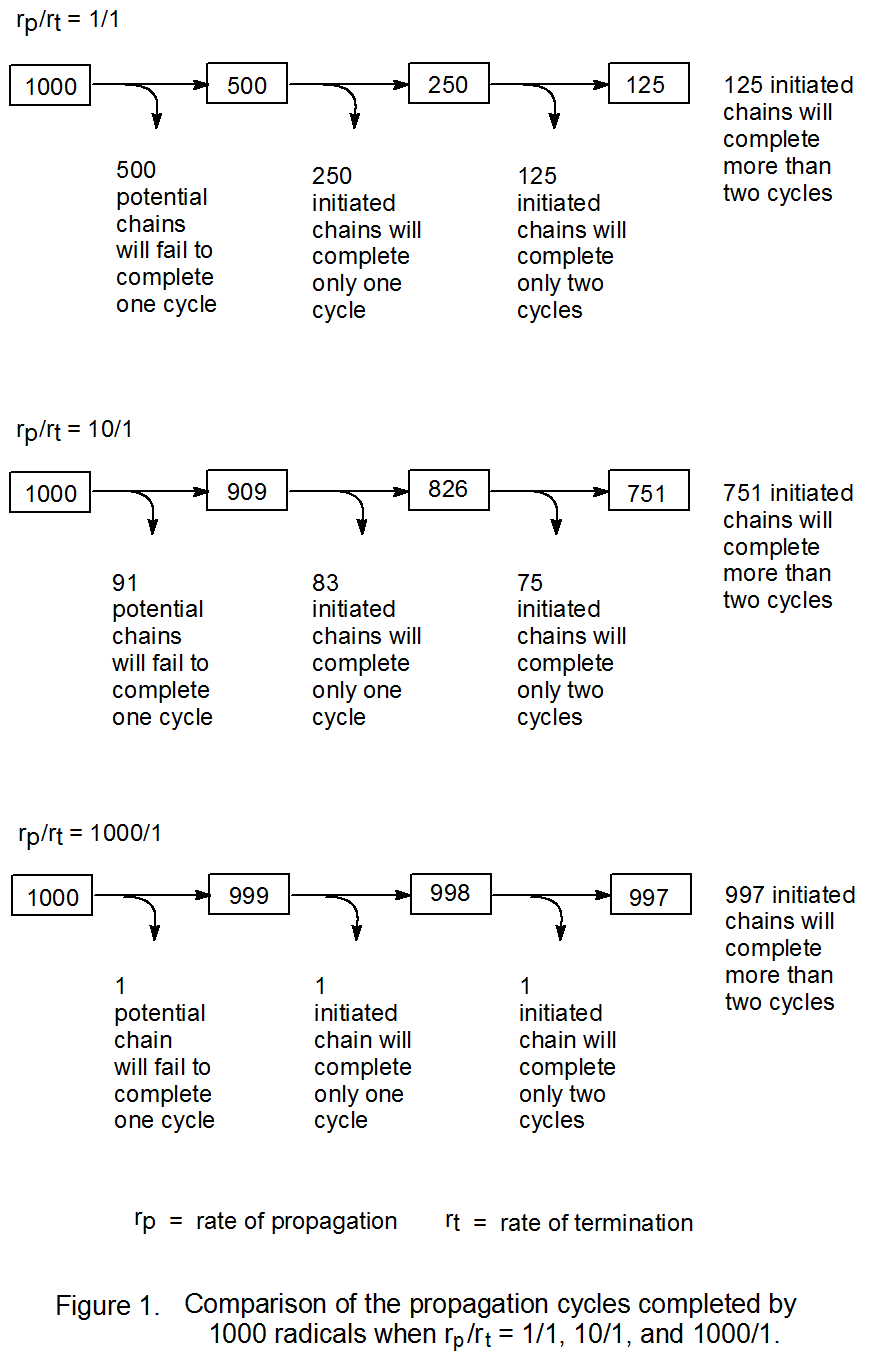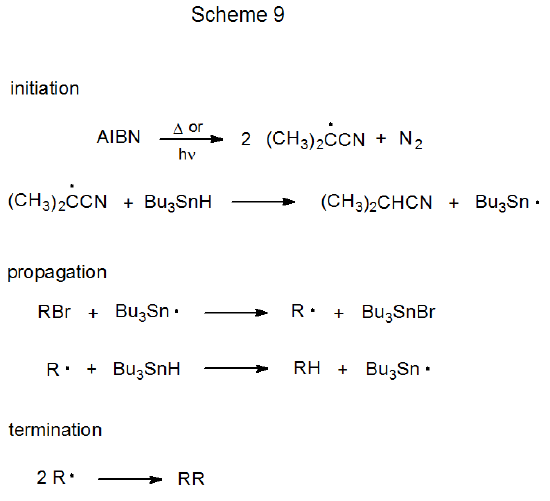III. Reaction Efficiency
- Page ID
- 23817
\( \newcommand{\vecs}[1]{\overset { \scriptstyle \rightharpoonup} {\mathbf{#1}} } \)
\( \newcommand{\vecd}[1]{\overset{-\!-\!\rightharpoonup}{\vphantom{a}\smash {#1}}} \)
\( \newcommand{\id}{\mathrm{id}}\) \( \newcommand{\Span}{\mathrm{span}}\)
( \newcommand{\kernel}{\mathrm{null}\,}\) \( \newcommand{\range}{\mathrm{range}\,}\)
\( \newcommand{\RealPart}{\mathrm{Re}}\) \( \newcommand{\ImaginaryPart}{\mathrm{Im}}\)
\( \newcommand{\Argument}{\mathrm{Arg}}\) \( \newcommand{\norm}[1]{\| #1 \|}\)
\( \newcommand{\inner}[2]{\langle #1, #2 \rangle}\)
\( \newcommand{\Span}{\mathrm{span}}\)
\( \newcommand{\id}{\mathrm{id}}\)
\( \newcommand{\Span}{\mathrm{span}}\)
\( \newcommand{\kernel}{\mathrm{null}\,}\)
\( \newcommand{\range}{\mathrm{range}\,}\)
\( \newcommand{\RealPart}{\mathrm{Re}}\)
\( \newcommand{\ImaginaryPart}{\mathrm{Im}}\)
\( \newcommand{\Argument}{\mathrm{Arg}}\)
\( \newcommand{\norm}[1]{\| #1 \|}\)
\( \newcommand{\inner}[2]{\langle #1, #2 \rangle}\)
\( \newcommand{\Span}{\mathrm{span}}\) \( \newcommand{\AA}{\unicode[.8,0]{x212B}}\)
\( \newcommand{\vectorA}[1]{\vec{#1}} % arrow\)
\( \newcommand{\vectorAt}[1]{\vec{\text{#1}}} % arrow\)
\( \newcommand{\vectorB}[1]{\overset { \scriptstyle \rightharpoonup} {\mathbf{#1}} } \)
\( \newcommand{\vectorC}[1]{\textbf{#1}} \)
\( \newcommand{\vectorD}[1]{\overrightarrow{#1}} \)
\( \newcommand{\vectorDt}[1]{\overrightarrow{\text{#1}}} \)
\( \newcommand{\vectE}[1]{\overset{-\!-\!\rightharpoonup}{\vphantom{a}\smash{\mathbf {#1}}}} \)
\( \newcommand{\vecs}[1]{\overset { \scriptstyle \rightharpoonup} {\mathbf{#1}} } \)
\( \newcommand{\vecd}[1]{\overset{-\!-\!\rightharpoonup}{\vphantom{a}\smash {#1}}} \)
Reaction efficiency is a relative concept. Reference to efficiency can take the form of a statement that one reaction is more efficient than another or that a reaction is an efficient process. Establishing a dividing line between efficient and inefficient reactions involves an arbitrary decision; nevertheless, it is sometimes helpful in discussing chain reactions to use the term efficiency and to associate a numerical value with it. Choosing chain length to measure efficiency can provide this number; thus, one way to define an efficient reaction is as one that has a chain length greater than 100.65
The efficiency of a chain reaction is determined by its relative rates of propagation (rp) and termination (rt). A reaction becomes more efficient as the ratio rp/rt increases; thus, the chain length in a reaction differs significantly when rp /rt is 10/1 as opposed to when it is equal to 1/1 (Figure 1). When rp /rt is 1/1, only 12.5% of the initiating radicals begin a chain destined to have a length greater than 2, but if the ratio of rpto rt is raised to 10/1, more than 75% of the initiating radicals produce chains with lengths greater than 2 (Figure 1). Even when rp/rt is 10/1, the reaction would not be described as an efficient one because a chain length of 100 in such a reaction would be a rare event. If, on the other hand, rp/rt is equal to 1000/1, nearly every initiated chain will complete two cycles (Figure 1) and most chains will have a length greater than 100; thus, the reaction is an efficient one. One desirable characteristic of a reaction with a long chain length is that converting all the starting material into product requires only a small amount of initiator.

It is informative to consider some actual numbers for rates of propagation (rp) and termination (rt) reactions to better appreciate how these rates determine chain length. One way to do this is to analyze a typical reaction such as the dehalogenation process shown in Scheme 9. Since the rate determining propagation step in this type of reaction is hydrogen-atom abstraction by R· from Bu3SnH,66,67 the rate of propagation (kp) is given by eq 19. A typical value for the rate constant (kp) for this reaction is 2 x 106 M-1 s-1.56 Since combination of two R· radicals is assumed to be the only significant termination process, the rate of termination is given by eq 20. The rate constant for termination (kt) will depend upon how rapidly these radicals come together in solution, that is, upon their rate of diffusion. The rate constant for diffusion is 1 x 1010 M-1 s-1 in benzene,68 a common solvent for such reactions. A typical radical concentration in a chain reaction is less than 1 x 10-7 M.57,62 A normal concentration for a hydrogen-atom donor is one molar. Based upon these numbers and the assumptions made about this reaction, dehalogenation with tri-n-butyltin hydride as the hydrogen-atom donor would be quite efficient because rp /rt would be approximately 2000 (eq 21).

%252C_(20).png?revision=1&size=bestfit&width=420&height=37)
.png?revision=1&size=bestfit&width=405&height=64)
Although discussion of chain reactions naturally focuses on how to increase efficiency, it is informative to examine the other end of the efficiency spectrum to determine the problems associated with inefficient reactions. As reactions become less efficient, more chains must be started in order for reaction to reach completion; consequently, more initiator must be added to the reaction mixture to compensate for the decrease in the average chain length. Increasing the initiator concentration increases the possibility of side reactions involving the initiator and radicals present in solution. As efficiency drops, chain termination products become more abundant. When this happens, product purification sometimes is more difficult. There are clear disadvantages to inefficient reactions.
A guideline for deciding when a chain reaction becomes too inefficient to be synthetically useful can be formulated in terms of rates of propagation and termination reactions.57 A criterion for usefulness is that the rate of propagation for a reaction (eq 19) should be greater than its rate of termination (eq 20).57 (This means that the first possibility pictured in Figure 1 would be just on the “wrong side” of the line for synthetic usefulness.) This dividing line is a reasonable one because any reaction in which an undesired product is formed at a faster rate than the desired product (rt > rp) is unlikely to be effective in synthesis.
Using the guideline that rp /rt should be greater than unity in a synthetically useful reaction sets a lower limit on the rate constant for propagation (kp).57 This limit is based on the following assumptions: (a) chain termination is a diffusion controlled process for which the rate constant (kt) is between 1 x 109 and 1 x 1010 M-1 s-1;68 (b) the radical concentration in a typical reaction is approximately 1 x 10-7 M;57,62 and (c) the concentration of the hydrogen-atom donor Bu3SnH is 1 M. Based on these assumptions, the rate constant for propagation (kp) for a synthetically useful reaction should be greater than 1 x 102 M-1 s-1 (eq 22 and eq 23). This limiting value for kp would hold for any reaction that satisfies the assumptions (a)-(c).
%252C_(23).png?revision=1&size=bestfit&width=410&height=132)

